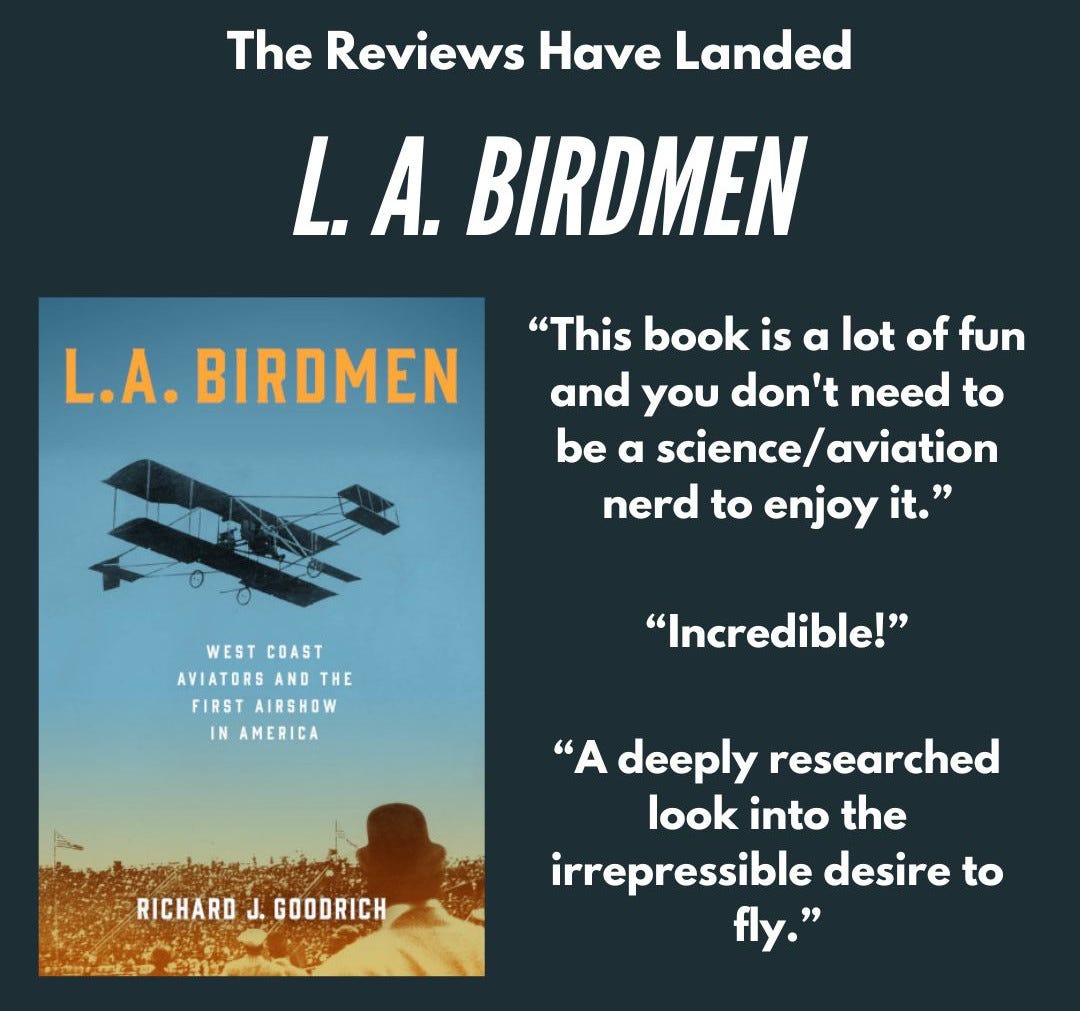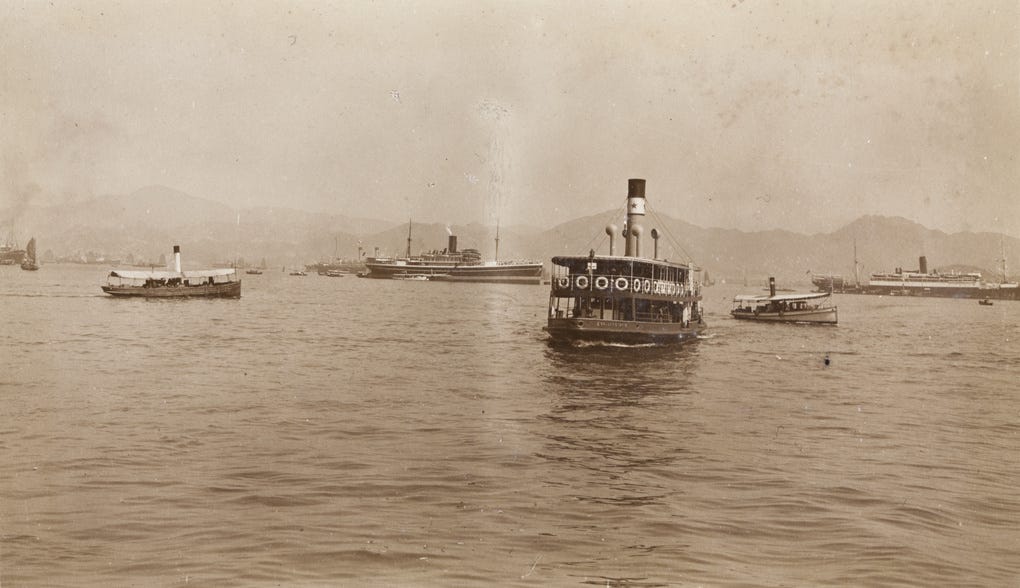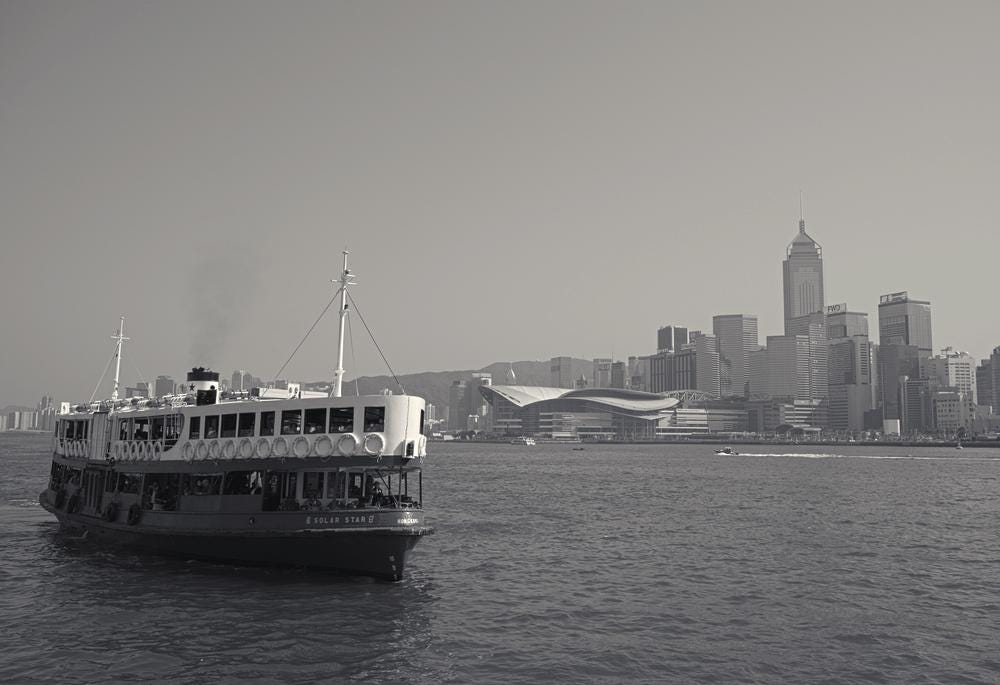The Peripatetic Historian
From the Deck of a Star Ferry, Hong Kong. February 2025, Vol. 4, no. 9.
Welcome to the January issue of the Peripatetic Historian.
This Month:
Peripatetic Field Report: A Return to Hong Kong
Book News
Then and Now: The Star Ferry
Let’s get started…
Peripatetic Field Report: A Return to Hong Kong
Long before I became a peripatetic historian, Hong Kong was my favorite city on earth. As a roving engineer in the mid-1990s, the city was my favorite stop when shuttling between Asia and the US.
I booked my flights strategically, slipping weekend Hong Kong layovers into itinerary cracks. I was enthralled, hooked, mesmerized. Hong Kong offered all of the fascinating culture of China without any of the Mainland’s inconvenience (or dysentery).
It was, as far as I was concerned, the greatest place on the planet.
My misspent youth came to an end; I abandoned engineering and went to history school; Hong Kong was handed back to China. Decades passed as I explored Europe and forgot about my former infatuation.
That all changed this month. With Taiwan only a ninety minute flight from Taiwan, the time arrived to renew an old acquaintance. Would it be awkward—two high school sweethearts exchanging doubtful glances at a thirty year reunion? Or would banked passion flare anew, reigniting an ardor I’d long thought extinct?
It was time to find out.
Ringing the Changes
Pre-1997 I was a handover skeptic—I doubted that the return of Hong Kong to the PRC would prove a positive development for the city. After a long weekend, I don’t know what to think. The city has not crumbled into dust—crowds pack the sidewalks, modern skyscrapers pack the shorelines, Porsches and Mercedes wheel through the street. Superficially, it remains the same fascinating place I knew thirty years ago. I fear that it would require months or years to discover what is roiling beneath the surface. The stalagmite of knowledge crystallizes, drip by drip, over time.
Some changes were obvious. Our inbound flight set down at the new (to me) Hong Kong International Airport. Thirty years ago one landed at Kai Tak, a single runway wedged between the high-rise apartment buildings of Kowloon. Aircraft on final approach slipped through a concrete canyon, jet engines stirring drying laundry before touch down.
That rustic (some would argue hair-raising) arrival is one of change’s casualties of the past. One lands on Chek Lap Kok Island, passes through a shining airport terminal, and then hops a metro train into the city. Quick, clean, efficient—although a little boring.
We had the good fortune to engage a hotel room right on the Kowloon waterfront. From our lofty perch, nine floors above sea level, we could look across the channel to the light show on Hong Kong Island. A display to rival Las Vegas—complete with a laser show every night at 8:00—cast luminescent patches of red, blue, and green across the darkened waters. A pair of Chinese junks, fake orange sails glowing, carried tourists on harbor cruises, east and west along the channel.
My memory insists that in 1996 one could still see traditional boats working the water. Some of them still harnessed the wind rather than petrochemicals. Today they’ve vanished, and one sees only ersatz junks, fake sails flapping in the breeze, plying the waterway.
10,000 Buddhas Can’t All Be Wrong
After realizing that an insightful essay on the past, present, and future of Hong Kong lay beyond my expertise, I relaxed and turned my attention to something new and fun: a morning spent with 10,000 Buddhas.
In 1933 a Chinese missionary named Yuet Kai moved to Hong Kong to stimulate a Buddhist revival in the city. He gathered disciples, cash, and, in 1951 began construction of a temple complex on a hill overlooking Sha Tin. Six years later the 10,000 Buddhas Monastery was complete.
The name is a two-headed misnomer—the site is not a monastery; Buddhist monks do not live there. Moreover, there are more than 10,000 Buddha statues at the temple complex. Estimates vary, but most sources place the actual number a little north of 12,000.
431 concrete steps lead visitors up to the temple. Both sides of the path are lined with golden statues representing a cross section of (primarily male) arhats—sages who have achieved enlightenment. The statues span the gamut of physiognomy and emotions: fat monks chuckle, rage, or roll inebriated eyes; emaciated sages grimace and leer. Look long enough and you will stumble across the perfect representation of your present state of mind.
On July 2, 1997, one day after Hong Kong’s handover to the PRC, torrential rain loosened the soil of the slopes around the monastery. A massive mudslide struck the complex and killed one of the caretakers. Since that time, the temple has been locked in a battle with a government that would like to shut it down over safety concerns, an unlicensed restaurant, and an unsanctioned columbarium.
To date, it prevails.
A Buddhist Conundrum
I enjoyed practicing my portraiture skills on the 10,000 Buddhas. The experience was not, however, without its little mysteries. There was, for example, this guy:
He is one of the divine magistrates who attend the Heavenly Emperor. I can’t explain his strange ocular configuration. Perhaps it is a carved representation of my father’s adage: “Look with your eyes, not your hands.”
Have a better idea? Drop your thoughts in the comment box at the end of the newsletter.
Book News
Then and Now
One thing hasn’t changed since my last visit to Hong Kong: it is still possible to cross between Hong Kong Island and Kowloon aboard one of the redoubtable Star Ferries.
Emperors still ruled China when the Star Ferry Company began operation. In 1880, a Parsi cook named Dorabjee Naorojee Mithaiwala purchased the one ship owned by the Kowloon Ferry Company and renamed the business. The Star Ferry Company flourished. Mithaiwala added new routes and additional ships to meet the demands of a growing city.
Although is cross-channel transportation monopoly was threatened by underground car and metro tunnels, passengers continued to patronize the service. And why not? A lovely jaunt in the fresh air is vastly superior to the recycled air and crowded cars of the subterranean subway.
For a surprisingly inexpensive fare (less than one US dollar), commuters enjoy the salt-scented breeze from one of the white iron and varnished mahogany benches on the upper deck. Boarding is conducted in the traditional manner: a free-for-all. Passengers queue at the top of a chute, and, when the green gate swings open, race down the ramp like rollicking oxen.
With the stragglers aboard, a gout of black diesel smoke blossoms from the midship exhaust stack, and the ferry pulls away from the pier—which in paint scheme and architecture, mimics the rounded stern of a Star Ferry.
Eight minutes later the ferry noses into the dock and the journey is at an end.
Two-and-a-half days is not enough time to assess the present state of Hong Kong. Nevertheless, I did form a few impressions. Were I to select an Asian city in which to spend the rest of my days, Taipei would trump Hong Kong. It has all the fascinating culture, without the crowds or the cost. Hong Kong’s waterfront location is appealing, but if it was truly important, Taiwan offers hundreds of miles of beachfront property.
In short, like a Star Ferry shuttling between docks, Hong Kong is a place I would like to return to, but it won’t return to its previous number one position in my heart.
On to Japan
Hong Kong offered an interesting weekend diversion, but, in an attempt to pack as much traveling possible into the short window of the Chinese Lunar New Year, four days after our return to Taipei we were back at the airport for another adventure.
As this newsletter hits your inbox and leeches into the groundwater of the internet, I am exploring Japan. Look for a full report next month.
Until then, be safe, be sensible.
This newsletter was designed to be passed along to a friend. Hit the share button and send a copy to someone else who might find it interesting.
Thoughts? Comments? I have a button for that as well:













Thanks again this month, for your thoroughly enjoyable newsletter. Keep them coming, as you visit places I would love to go, but alas, cannot.
Bill
Thanks, Richard. Here is a haiku in response to the Buddha:
his eyes
massage thought
neon Buddha